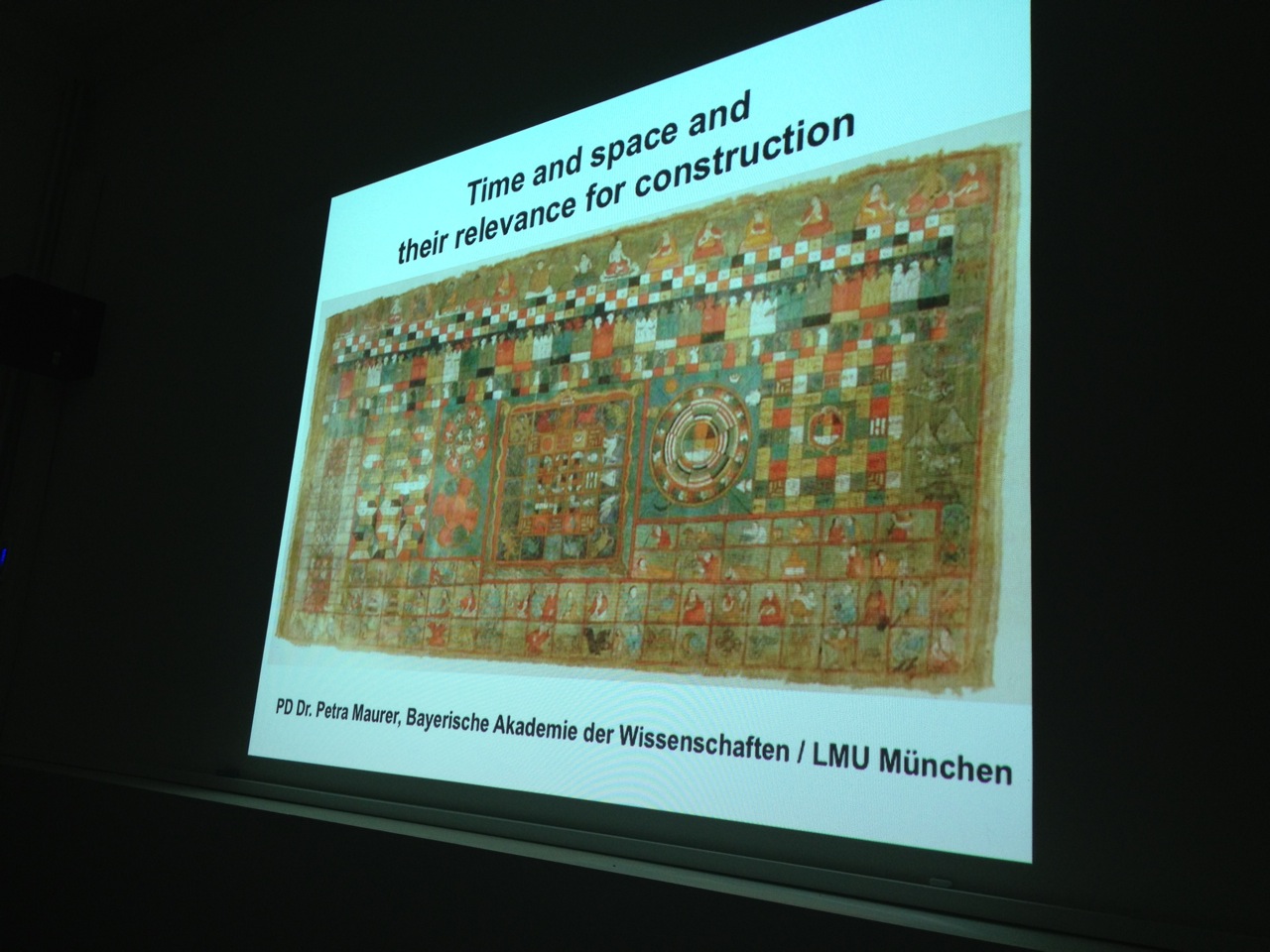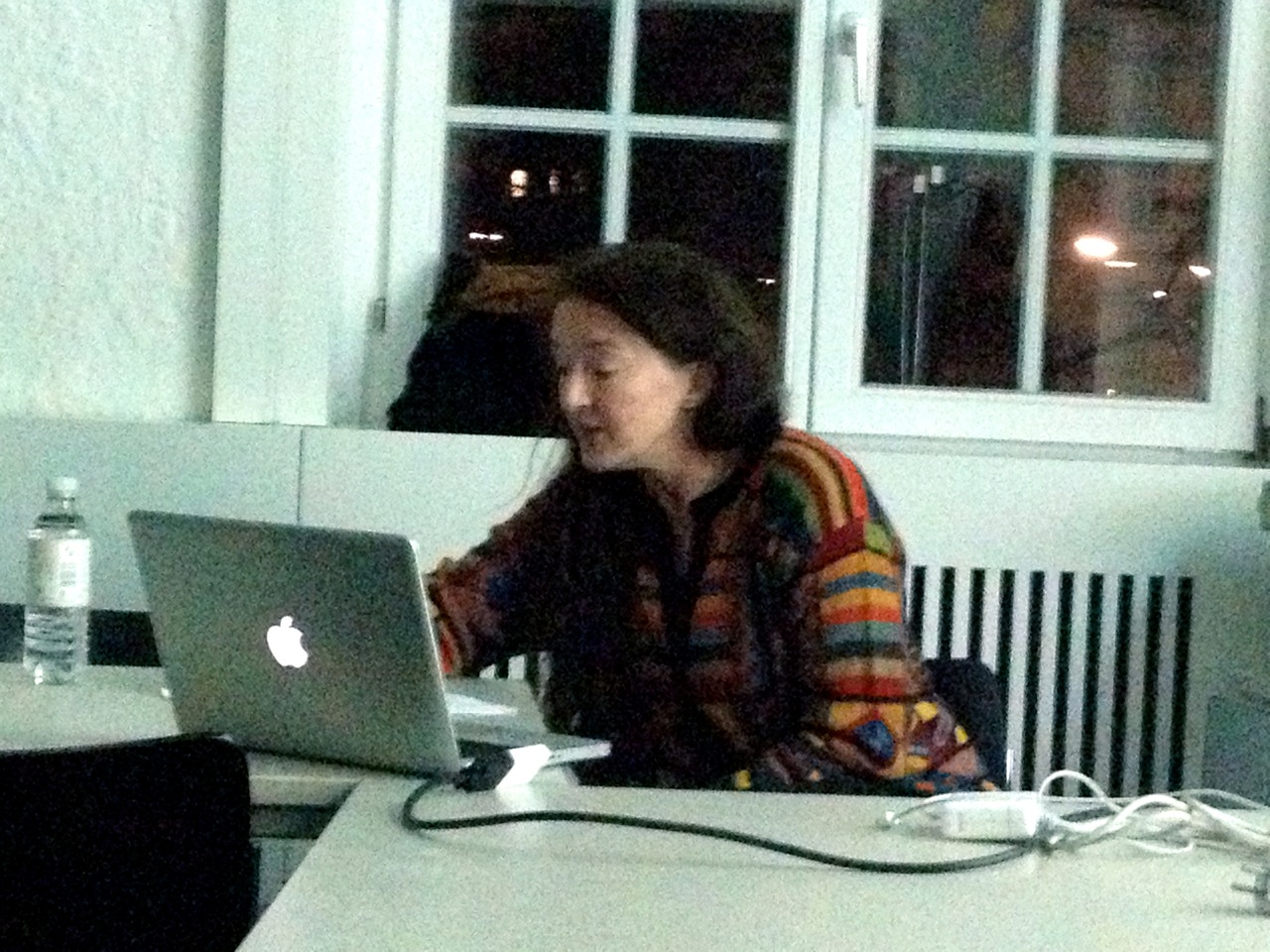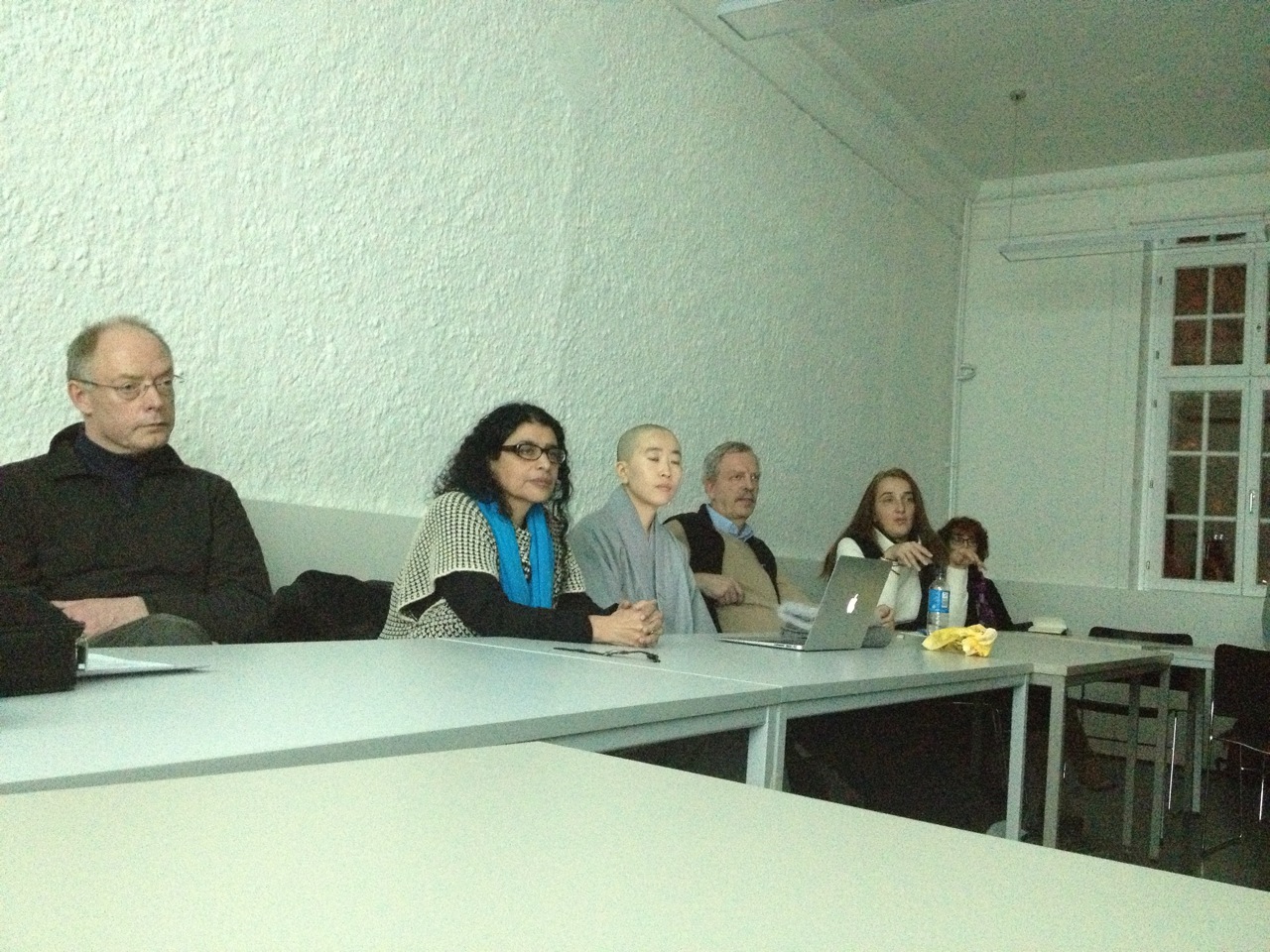Petra Maurer: “Time and space and their relevance for construction”
19 December 2012

Photo: Orna Almogi
The tradition of interpreting the landscape goes back to ancient times when the kingdom of Tibet was founded. Historical texts tell us that in those times the Chinese princess Wencheng came to Tibet and married the king Srong-btsan sgam-po. She brought from her father a divinatory chart (gab rtse), in order to introduce to Tibet the Chinese system of divination. In the following centuries, ideas about the proper sites for the construction of any kind of buildings, for example houses, monasteries or stūpas, were subject to influences from India as well.
Hundreds of years after the arrival of Wencheng, sde srid Sang rgyas rgya mtsho (1653-1705), the regent of the Fifth Dalai Lama, collected these precepts, which had developed over the centuries, in chapter 32 of the Vaidurya dkar po.
This text is written in verse and cannot be understood without a detailed knowledge of the Chinese-Tibetan system of divination. In order to find the right time for the ceremony of ground-breaking, one has to understand terms such as keg, dgu mig, dur mig and rtsub. These expressions show the importance, according to Tibetan belief, not only of the site but also of the time at which a building is constructed.
- Click here to download the invitation (PDF)
December 19th, 2012 - 18.00h
Universität Hamburg, Hauptgebäude,
Edmund-Siemers-Allee 1, Raum 118
Free Entrance.
 |
 |
 |
